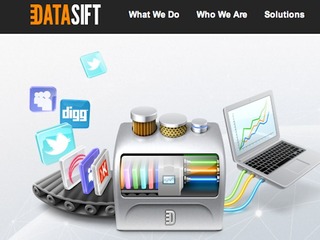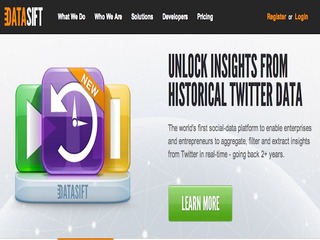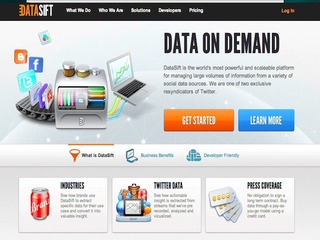

Information can be a very powerful tool, but trying to find and sort through it is a challenging task. Marketers, researchers and journalists are often scouring through social media and news archived to find trends and opinions of people on a given topic but now that process is getting much easier.
DataSift announced a partnership with NewsCred on Tuesday that brings together the troves of data from Twitter as well as 750 news sources so people can track the public conversation on a variety of topics, nearly in real time.
This new service comes just a month after DataSift launched Historics, a product that gives its users the ability to search through the Twitter firehouse back to January 2010.
The young San Francisco-based company focused on social data tracking and analysis created this partnership with NewsCred to help its users access even more information about any topic or keyword that they may wish to search.
NewsCred is a platform that connects publishers and brands and includes content from The Economist, The Guardian, Forbes and Bloomberg.
For instance, if anyone wanted to track the conversation about the Facebook IPO from the time of the announcement onward they would be able to look at each news article in the NewsCred data base and see, overtime how often it was shared on Twitter and if the sentiment of the tweets were positive or negative. The researcher could also see which articles were most shared, the times they gained virility and if there were any other trends such as age demographics of those sharing or geographical location of the people sharing.
Here is the evolution of the Facebook IPO discussion across NewsCred articles, as they are shared via Twitter. As you can see, one of the first articles that broke the story got the most shares (denoted by the fact that the graph circle is the largest). And you can also see that the general sentiment about the IPO is positive since it is dark blue.




In the following two graphs, the color is no longer for sentiment, but instead for social traction (retweets and other shares) and so you can individually choose the most shared articles on the Facebook IPO to see where they came from and why they were so widely distributed. DataSift users might also then be able to break down if it was a lot of casual Twitter users or a few very influential and highly followed Twitter users that caused such a spike.




Tim Barker, DataSift’s CMO, explained to me in an interview that this new tool can really help identify factors in what connects with a given audience and how to engage a response from different demographics.
“Companies that want to watch breaking news can see the conversation and sharing of a single article or topic will be able to better understand news diffusion with these graphs,” Barker said. “ And publishers no longer have to passively monitor clippings about their companies – they can see as different conversations are started and how they morph and evolve.”
Barker also explained the over the next few months the company would like to add more data sources so that the information users pull from just keeps getting more extensive.
Users could also search for the types of discussions had on a topic – brands might find this helpful so that they know how to hand a PR problem or what messages are resonating. Journalists might also find this new tool handy since they could see what instigated virility in an article and also what discussions are being sparked by a topic (so they can write follow-up articles about issues that people are interested in discussing.)
“It’s always been our goal to find and create additional revenue opportunities for publishers,” said Shafqat Islam, CEO of NewsCred. “By combining DataSift’s platform with our news offering and analytics, this partnership represents a truly innovative way to monitor news across the social web.”
DataSift uses its complex filters to provide its users any level of analysis on how certain topics, brands, citizens or events are being discussed on Twitter.
I spoke with DataSift CEO Rob Bailey about the types of searches and analysis that he has been excited by since his company’s launch in November.
“I just keep getting blown away by the research and studies that people can derive from Twitter data,” Bailey told me. “I have seen everything from searches that measure company sentiment in order to predict stock price changes to major US cities looking at its citizenry and their biggest concerns.”
Bailey has even seen studies that look at the tweets from farmers to predict weather patterns and farming cycles.
The possibilities are wide open, and since more than half of the people that have already started working with DataSift were really interested in historical data, the company got to work archiving that information for better search options and results (which usually could only go back in time a month or to the start of the company.)




















